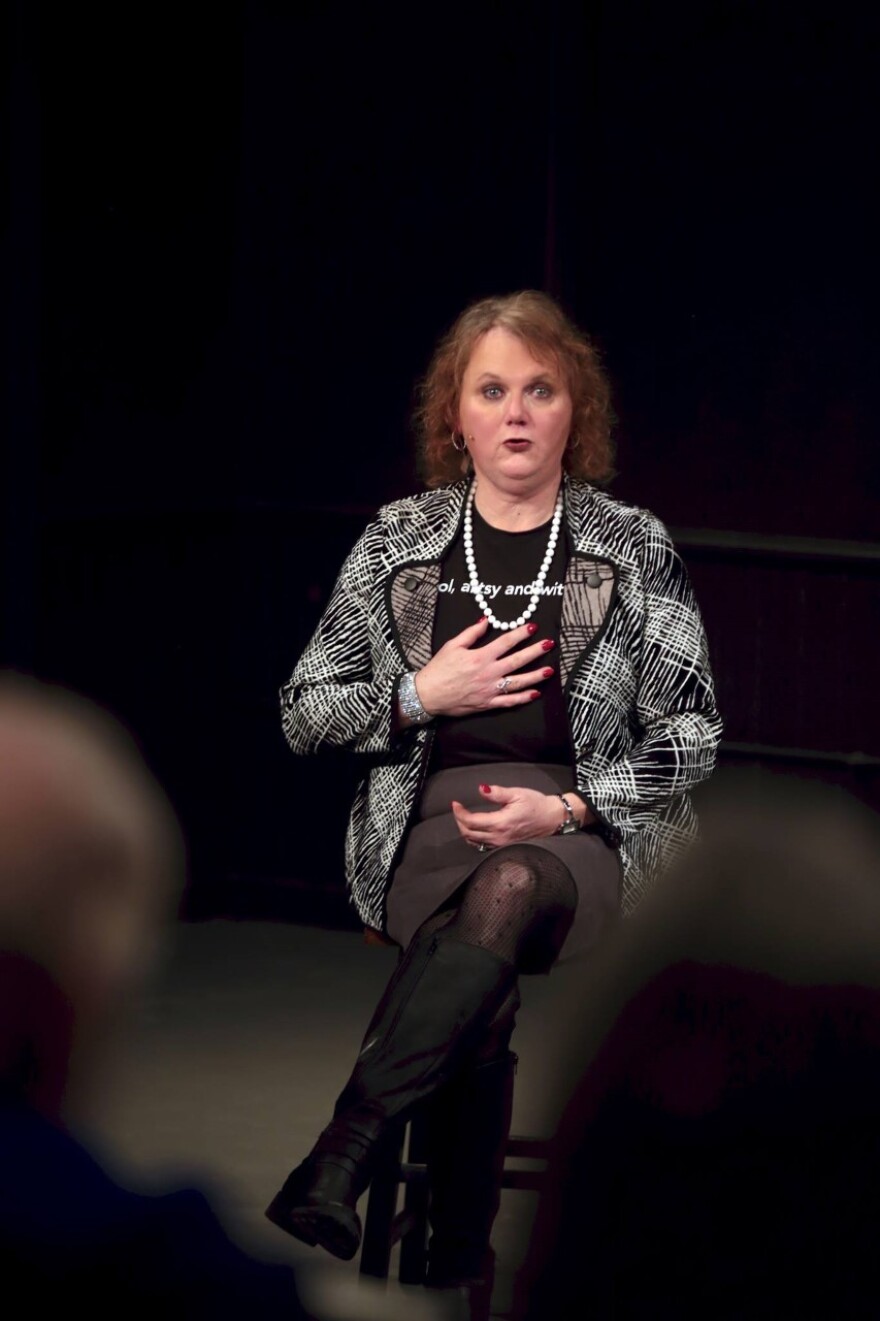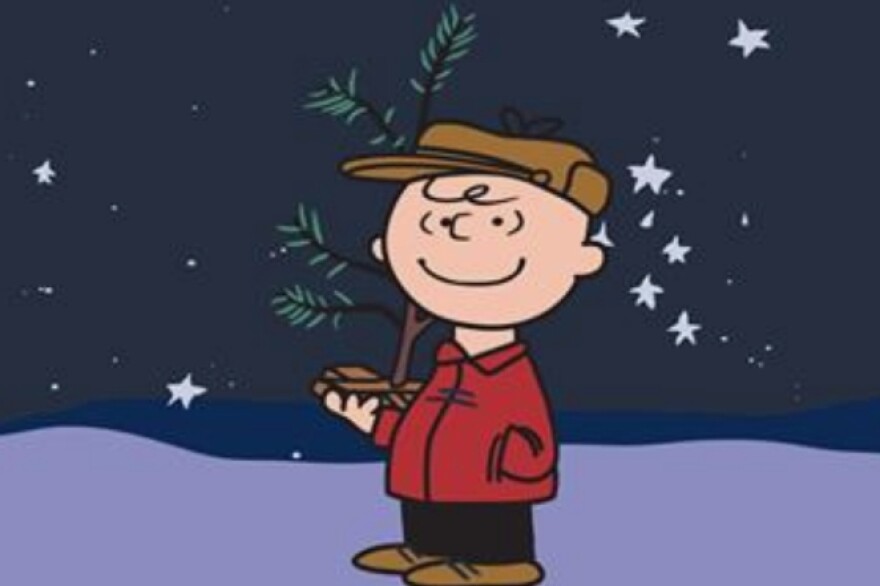If it weren’t for Willie Mays, we might never have been blessed with “A Charlie Brown Christmas.”
That’s just one of Penny Sterling’s revelations in “The Story Behind the Story of ‘A Charlie Brown Christmas,’ ” presented live at 7:30 p.m. Friday on Zoom. Sterling will reveal the secrets she has uncovered before allowing viewers to ask questions or share their own Ghosts of Christmas Past.
Sterling has evolved from open-mic comedy gigs to working with local comedy troupes to presenting her acclaimed spoken-word show “Spy In the House of Men” at the KeyBank Rochester Fringe Festival. She first began looking into the story behind “A Charlie Brown Christmas” 15 or 20 years ago, she guesses, as a producer for a local television newscast.
Sterling thought it might be interesting to see what had become of the elementary school kids who supplied the voices for the show. “See how their lives turned out,” as Sterling says.
Her main investigative tool at the time was what she calls “the nascent internet.” The early, coal-powered version of the World Wide Web. Sterling admits the research went nowhere. Years of software upgrades later, and with the harsh passage of time, Googling the cast of “A Charlie Brown Christmas” tells a more complete story: The 9-year-old kid who originally voiced Charlie Brown was sentenced in 2015 to nearly five years in prison for stalking and making terroristic threats. Including against a plastic surgeon who gave his former girlfriend breast implants that he didn’t like.
So the 55-year-old “A Charlie Brown Christmas” has aged better than at least one of its stars.

Sterling’s research into the show uncovered conflicting stories of how it came to be. Even the show’s producer, she says, has told the story one way in one interview, another way in yet another interview.
“In a big way, it really doesn’t matter if it’s accurate,” Sterling says. “Stories like this don’t need to be accurate, they just need to be true. And this is true.”
Producer Lee Mendelson had some success in 1963 with a documentary called “A Man Named Mays,” about the Giants’ center fielder Willie Mays, widely regarded at the time as the best player in baseball. For his next project, Mendelson turned to the creator of the most popular newspaper comic strip in America, “Peanuts.”
Just one problem there.
“Charles Schulz was not the sort of person who liked to talk to people,” Sterling says. “He was pretty introverted, he had refused opportunities to be interviewed for, like, 10 years. But he was also a baseball fan, specifically of the New York Giants. Willie Mays was his favorite player. When he found out the person asking him was the guy who created ‘A Man Named Mays,’ he said, ‘Yes.’ ”
And then, another problem.
“There’s a big difference,” Sterling says, “between doing footage of a really exciting baseball player and this sort of lumpy, 30-something guy who sits in front of a drawing board all day.”
So Mendelson turned the project into one of taking the characters from a newspaper comic strip and turning them into an animated cartoon. That had never been done before.
Sterling has lots of other details to share. How the music of a Brazilian art-house film, “Black Orpheus,” inspired an American honky-tonk jazz pianist, Vince Guaraldi, to release a 45-rpm record that went nowhere. But when a DJ flipped the record over to play the upbeat B-side, “Cast Your Fate to the Wind,” it was a minor hit. Reworked by Guaraldi, and renamed “Linus and Lucy,” it became the instantly recognizable signature theme of all things Charlie Brown.
“A Charlie Brown Christmas” is not simply for kids, Sterling insists. The ABC network had presented “Rudolph the Red Nosed Reindeer” in 1964, and CBS wanted to fire back with its own Christmas classic. “A Charlie Brown Christmas” was slapped together in mere months in order to be ready for the 1965 Christmas season.
Except ... CBS execs hated everything about what Mendelson gave them. They hated the kids’ voices, the music and the dog, Snoopy. “A Charlie Brown Christmas” is about the commercialization of Christmas, Sterling says; how was CBS supposed to sell commercials for this?
But it was too late to drop the show from the lineup. It aired on Dec. 9, 1965.
And much to the surprise of the all-knowing execs, it was wildly popular. More than five decades later, “A Charlie Brown Christmas” was still airing on network television.
“For me, it’s a connection to my past,” Sterling says. “And for my kids, it’s a connection to their past, too. Even though they’re in their 20s and 30s, they still remember sitting down and watching ‘A Charlie Brown Christmas’ with their parents. Like I did with my parents.”

Sterling remembers those days of appointment TV, eagerly scanning “TV Guide” for when “A Charlie Brown Christmas” was showing, and how the next day in elementary school they talked about “this unique shared national experience.”
Snoopy was another star of the show who did not age well. In real life, Schulz did own a dog named Snoopy, a thug who fought with other neighborhood dogs. So Schulz traded him for a load of gravel.
Nevertheless, it’s feel-good stuff.
“There are so many people that just want to watch it together,” Sterling says. “Even in the COVID era, it’s even more important, I think, to have this communal thing where everybody, where so many people are watching it together.”
As a ballplayer, Charlie Brown was the antithesis of Willie Mays. The art of “A Charlie Brown Christmas” looks a little crude in this era of slick pixel animation. And while “Rudolph the Red Nosed Reindeer” has a happy ending, “A Charlie Brown Christmas” leaves the emotions a little more open-ended. That’s a draw for adults like Sterling.
“ ‘Peanuts’ is an existential crisis,” she says, “and you don’t have to be a kid to have those.”
Another thing that “A Charlie Brown Christmas” demonstrates: The messaging of the 1960s could get a little awkward.
“You think PC things are bad now?” Sterling asks. “In the 1960s, think about it, you couldn’t talk about sex.” That means in the world of television, married couples slept in separate beds, and no one on “I Love Lucy” could point out that Lucille Ball was “pregnant.” She was “in a family way.” Or more pointedly, in a time when pregnancies were confirmed by animal-based testing, “the rabbit died” was a euphemism for a positive test.
And “A Charlie Brown Christmas” was constrained by another mid-’60s TV taboo. Religion. “You could not talk about Jesus in a show about Christmas,” Sterling says. “And so they had Linus read Scripture. It was really, really weird. And that was something that never happened before. It wasn’t the crazy hippies that were doing this, it was the Standards and Practice people at CBS saying, ‘No, you can’t say Jesus in a Christmas special.’ What the hell, why not?”
What’s the logic to such obfuscation?
“The logic of that is in America, you’re never allowed to say what you’re saying,” Sterling says. “Everything has to be allegory and allusion. It’s how we get to be racist without really being racist, if you want to look at it. ‘I’m not saying the N-word, therefore I am not racist.’
“Americans never say what they mean.”

Until you mess with “A Charlie Brown Christmas.” Last month, the subscription internet service Apple + bought all of the “Peanuts” specials. “A Charlie Brown Thanksgiving.” “It’s the Great Pumpkin, Charlie Brown.” The second season of the Snoopy in Space series, plus new specials for Mother’s Day, Earth Day, New Year’s Eve and going back to school.
It was a corporate takeover that fans of “A Charlie Brown Christmas” could not endure. So to placate the pitchfork-waving mob that gathered in anger over having had this family tradition seized from them by executive fiat, from Dec. 11 through Dec. 13, Apple + will stream “A Charlie Brown Christmas.” And to further placate the pitchfork-waving mob, PBS will show “A Charlie Brown Christmas” at 7:30 p.m. Dec. 13. And both the Apple + stream and the PBS broadcast will be free, as “A Charlie Brown Christmas” has always been. For a half-hour, corporate Christmas will have been defeated.
So we can all gather ’round the giant flat screen to see that sad little Christmas tree that Charlie Brown brings home, the tree that can barely hold a single ornament.
And then, we return to our regularly scheduled consumerism. “You can now buy that tree,” Sterling says, “for $9.99 on Amazon.”
Jeff Spevak is WXXI’s Arts & Life editor and reporter. He can be reached at jspevak@wxxi.org.

